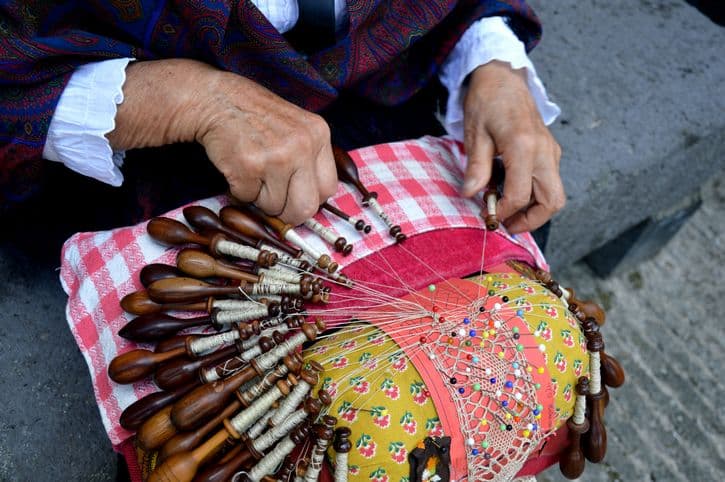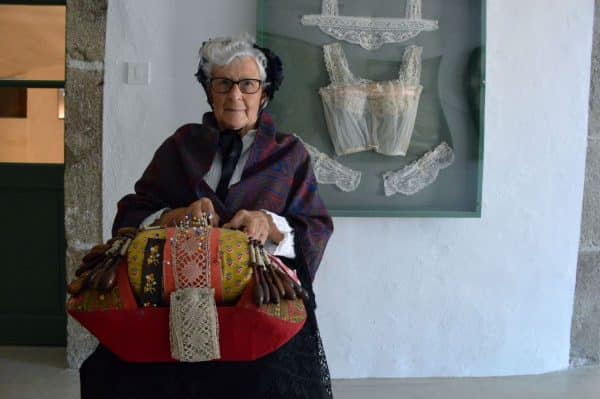La dentelle se réinvente à Arlanc
Granddaughter of a lacemaker, the Arlancoise Ginette Bravard, 83, a native of Dore-l'Eglise, took up lace, the "torch-fuseau late in life.
To perpetuate the tradition, the young retiree at the time trained with local associations of lacemakers, active in the territories of Ambert and Arlanc.

Au lace museum in Arlanc, open all summer, Ginette Bravard perpetuates a tradition deeply rooted in the area.
A territory where, for centuries and until after the war, women remained alone on farms in winter (husbands leaving to work in town). They made the fabric prized by the bourgeoisie or the clergy. Often exploited by merchants, these women only received a small fee for their works, which sold for a much higher price.

Over the memories
From Félicie, her grandmother, Ginette Bravard inherited the “tile”; this work support used by these nimble-fingered workers to carry out their work, which is often nocturnal.
Leaning over this century-old tool, the lacemaker unrolls the thread of her memories with a half-concentrated, half-dreamy air; when, as a child, she observed the women of the village.
“In summer, the lacemakers gathered under the same tree. They set to work and chatted together, while watching the children. The bobbins were often made from wild cherry wood with which we made clafoutis », she recalls.
Two bobbins, even those of cakes of yesteryear, in each hand, the Arlancoise lacemaker reproduces today the gestures of yesteryear.
The gesture applied
Where the spider would perhaps get tangled like many other paintbrushes, Ginette then crosses and intersects dozens of linen or silk threads. In a logic to make neophytes pale, to make scholars envious.
Around needles planted in the cushion of the tile, the lacemaker thus passes from one point to another. She then traces the pattern drawn on a sheet of paper placed on the loom.
Far from the industrial pace, the work progresses slowly. Hours of work are needed for a few centimeters of lace.
At this pace, thanks also to practice, Ginette knows how to recognize the fine workmanship of more ordinary pieces.
« As with other forms of craftsmanship, some lacemakers from Arlanc stood out explains Ginette.
When finished, the lace “grid” will come together with other patterns made separately to form a larger and more homogeneous whole.
Between heritage and contemporary art
Having fallen into disuse, lace nevertheless reappears here and there according to fashion. Without ever being able to find the prosperous time when it served in particular as a social marker.
Presented at lace museum in Arlanc, the work of these garment makers of yesteryear, of which Ginette Bravard is the proud descendant, evokes this luxury of another time.
Three contemporary artists revisit lace
To avoid mothballs, and despite the obvious historical, anthropological and aesthetic interest of its permanent collection, the Lace Museum in Arlanc has recently played the card of modernity. By inviting three contemporary artists to exhibit their works in the summer.


